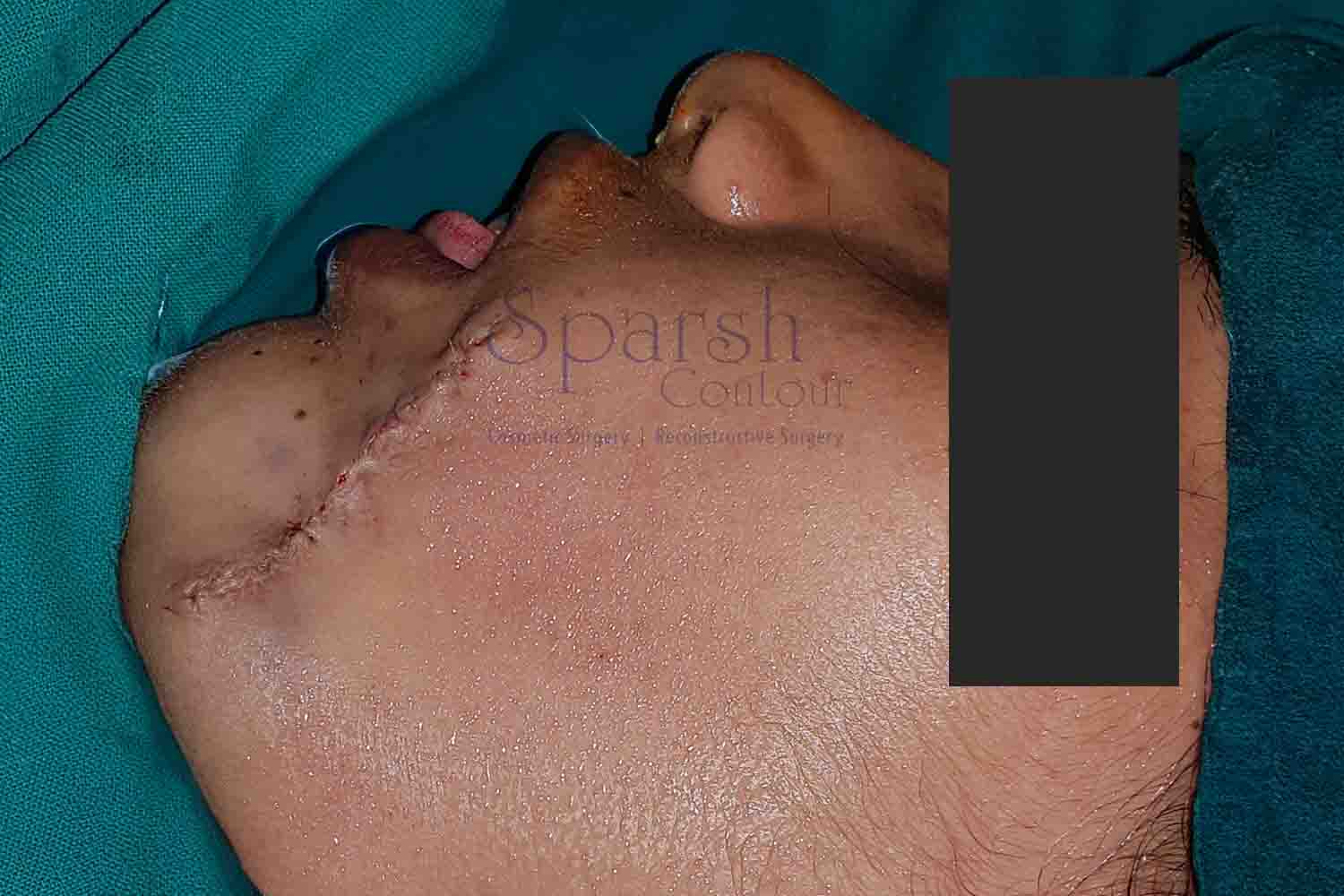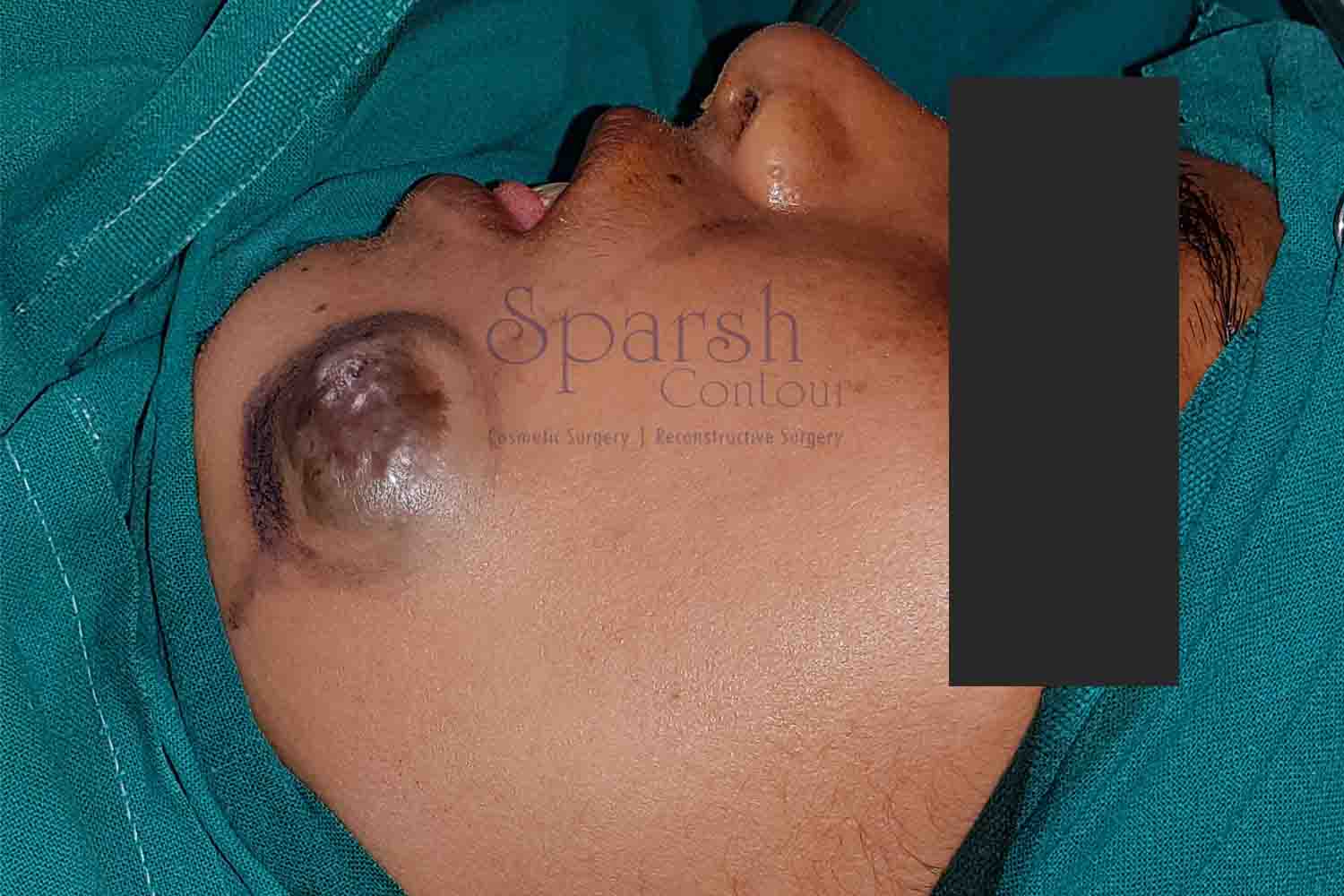Birth Deformity
Vascular Malformations
Vascular malformations are abnormal clusters of blood vessels that develop during fetal growth and persist throughout life. Unlike hemangiomas, which are benign tumors that often appear in infancy and may resolve over time, vascular malformations are present at birth and grow proportionately with the child. These malformations can occur in any blood vessel, including arteries, veins, capillaries, or lymphatic vessels, and may affect any part of the body, including the skin, muscles, bones, and internal organs.
The causes of vascular malformations are often linked to genetic mutations, and they may be associated with certain syndromes or occur sporadically. Treatment options are tailored to the specific type and severity of the malformation and may include observation, laser therapy, sclerotherapy, embolization, or surgical intervention. Dr. Sushil Nahar, a specialist in vascular and reconstructive surgery, often collaborates with a multidisciplinary team to provide comprehensive care for patients with vascular malformations, ensuring the best possible outcomes through personalized treatment plans.
The causes of vascular malformations are often linked to genetic mutations, and they may be associated with certain syndromes or occur sporadically. Treatment options are tailored to the specific type and severity of the malformation and may include observation, laser therapy, sclerotherapy, embolization, or surgical intervention. Dr. Sushil Nahar, a specialist in vascular and reconstructive surgery, often collaborates with a multidisciplinary team to provide comprehensive care for patients with vascular malformations, ensuring the best possible outcomes through personalized treatment plans.
 After
After  Before
Before Drag
Birth Deformity
Types of Vascular Malformations ?
- Lymphatic formed when excess fluid accumulates within the lymphatic vessels
- Arteriovenous abnormal connections between arteries and veins, resulting in a high flow, pulsating collections of blood vessels
- Capillary (port wine stain) always present at birth as pink or purple skin patches
- Venous malformations are soft to the touch and the color disappears when compressed. They are most commonly found on the jaw, cheek, tongue and lips
our expert answers
frequently asked questions
How are vascular malformations diagnosed?
Vascular malformations are typically diagnosed through clinical examination, imaging studies such as ultrasound, MRI, or CT scans, and sometimes genetic testing to determine the type and extent of the malformation.
What symptoms do vascular malformations cause?
Symptoms vary depending on the type and location of the malformation and can include pain, swelling, visible discoloration of the skin, bleeding, and in severe cases, impaired function of affected organs.
Is surgery always required for vascular malformations?
Not always. The necessity of surgery depends on factors such as the size, location, and symptoms of the malformation. Some cases may be managed with non-surgical treatments or observation, while others may require surgical intervention.
Can vascular malformations recur after treatment?
Recurrence is possible, especially with more complex malformations. Regular follow-up with a healthcare provider is essential to monitor for any changes and manage them appropriately.
APPOINTMENT
